Located 38 km from Lao Cai City, Sapa is a mountainous district of Lao Cai Province. Each time the name Sapa is mentioned, it conjures up a dreamy landscape immersed in fog and a distinctive vividity of ethnic life.
With special location isolated from the modern civilization, ethnic minority villagers thrive under the unique conditions. In addition, it is the diversity of ethnic groups that make Sapa an ideal destination for culturally adventurous travelers. Leaving the busy life behind and taking opportunity to experience incredible Sapa will bring you the unforgettable memories.
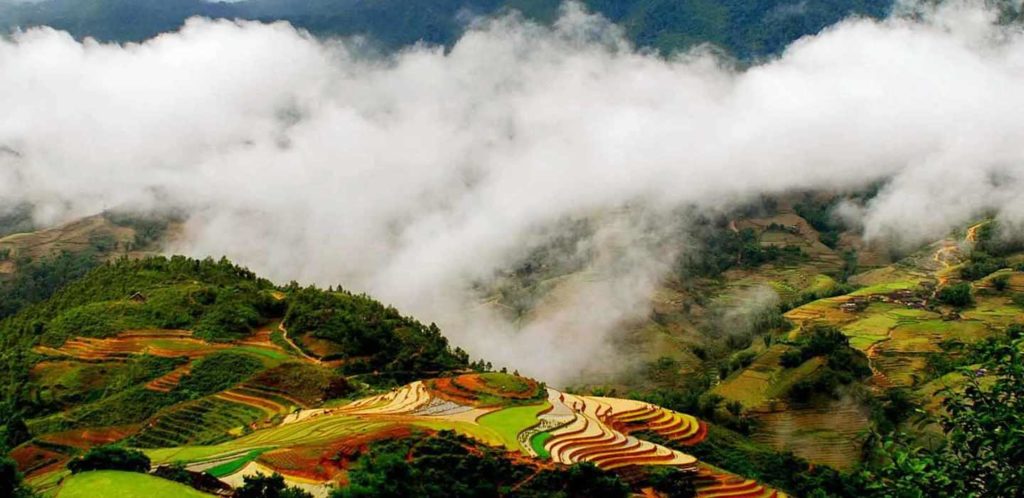
Sapa’s traditional festivals
Traditional festival is popular and typical tourism form attracting a large number of tourists coming to discover Sapa. That kind of festival is held to introduce and promote unique cultural values of local people and nature to Vietnamese visitors in particular and foreign visitors in general. They are vivid reflection of the life of ethnic group community in Sapa. Therefore it is common for any tourists to find themselves in love with Sapa’s special festivals namely Cloud being on festival – perform folklore among villages; cultural day of Mong, Cat Cat Village, San Sa Ho Commune; performance of traditional songs, unique and mysterious dances and folk games of Ethnic minority group in mountainous areas of Sapa at Ham Rong Mountain Ecotourism Resort; “One day as a farmer” tour in Ta Phin Commune…
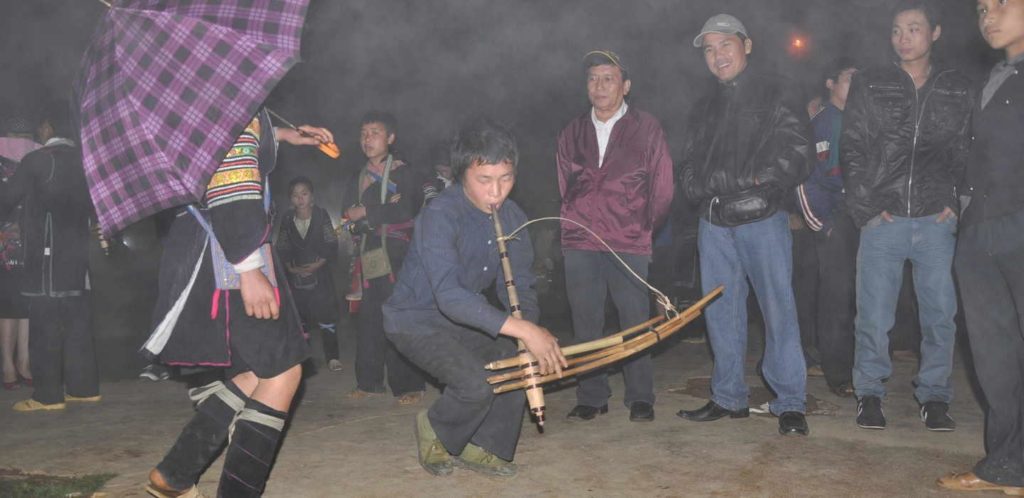
Sapa love market
For any tourists to Sapa, the not-to-be-missed event is the love market existing for many years– the distinctive cultural features in Sapa. The market is held only once a week, every Saturday night, and lasted to Sunday for goods trade and culture exchange. To participate in this market, it takes local people living far from there a lot of time to go to, so they have to manage to go in advance on Saturday. The highlight activities in the market are that young men and women in other villages have great chance to meet and know each other through playing leaf-horns, traditional games, singing and dancing basing on special melodies. That is why the market has romantic and emotional name – love market expressing eternal love. And it does be market to combine village boy and girl to be husband and wife if they are lucky enough to find out their fatal partners. From the Saturday afternoon, down the street and in front of the church, tourists can see a lot of Dao girls and boys in rhythm of singing and dance which is passionate hearts.
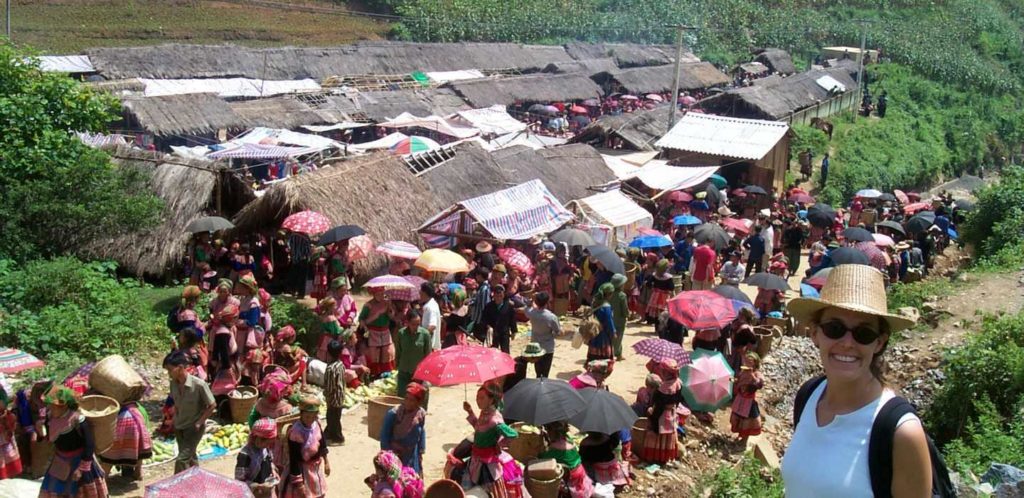
Sapa ethnic minorities – colorful pieces of the unique patchwork
The Hmong
In Sapa, the Hmong Leng (Black Hmong) are the most numerous, some Hmong Sheu and Hmong Pe women – with their colorful skirts and double-breasted tops– come from the Muong Khuong district. You can easily recognize each group by their costumes (color, pattern and design). The villagers mainly rely on traditional agrarian economy with raising animals (pigs, chickens, buffaloes and horses), planning crops (rice, corn, manioc) and cash crop (cardamom and vegetables).
The traditional social organization of the Hmong is based on the clan. Each clan is made of lineages, all the members of which acknowledge a common founding male ancestor. In the Hmong household, up to four different generations may be gathered under the same roof. The household is the most important economic, political and ritual unit. The villages perched on the mountain slopes house several clans.
The Dzao
One of the Dzao’s specific cultural features is their traditional writing system using Chinese characters. The art of painting on paper and canvas survives among the Dzao because yearly they organize religious ceremonies (Taoist) with ritual space covered by painted pictures of the divinities and celestial generals. Like the Hmong, the Dzao build terraced paddy-fields irrigated by a sophisticated system of canals around Sa Pa. They also have a reputation for pig and horse breeding. The different Dzao groups in Sapa have different costumes with various colors and designs such as the Dzao group from the Lao Cai province usually wear red headdresses or red pieces of clothing; the Dao (Ké Mien) from the Taphin and Tavan villages (Sa Pa district) wear flat headdresses, totally red, hung with silver coins, etc….
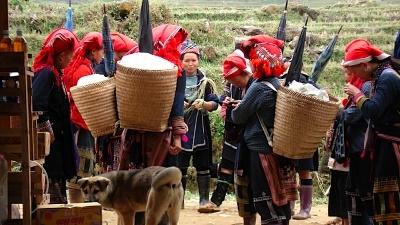
The Tày
The Tày villagers earn for living by grow rice in paddy fields in Sapa’s terrace of plains and valleys. They live in wooden or bamboo stilt house often built near The villages consist of wooden or bamboo stilt houses and are often built near the bank of a stream or a river. The household is the basic economic unit and tends to be a nuclear family limited to close relatives.
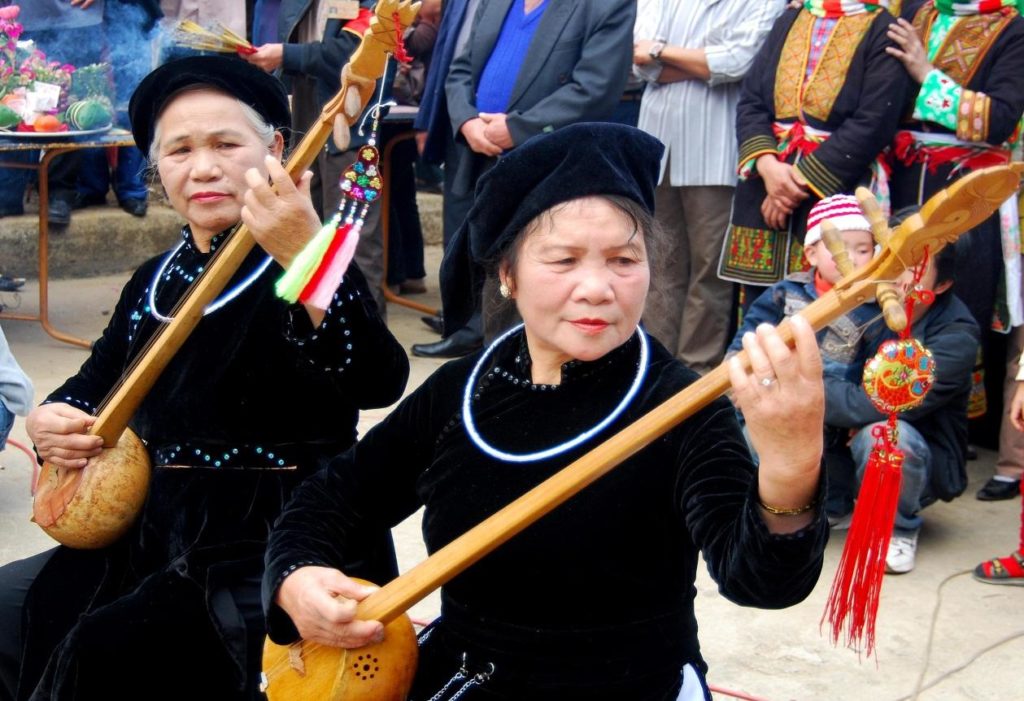
The Tày, Giay, Nung and Thai women wear brightly-colored jackets, – pink, green, or blue – double-breasted, often with contrasting braid at the collar. The tartan headscarf covers their hair gathered into a bun. Traditionally, each group used to have their own style of bun, held up with long silver needles, but the custom is vanishing.

